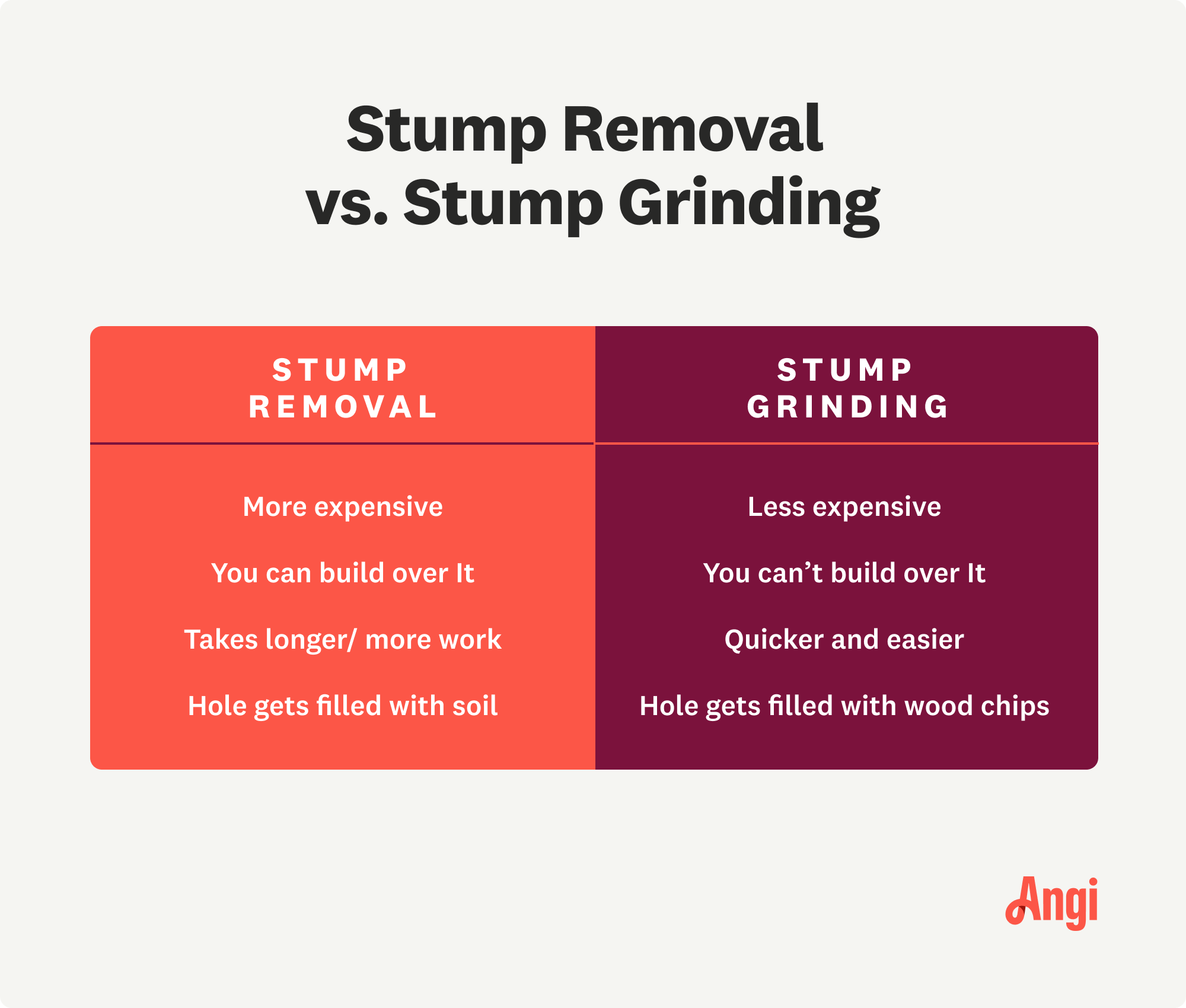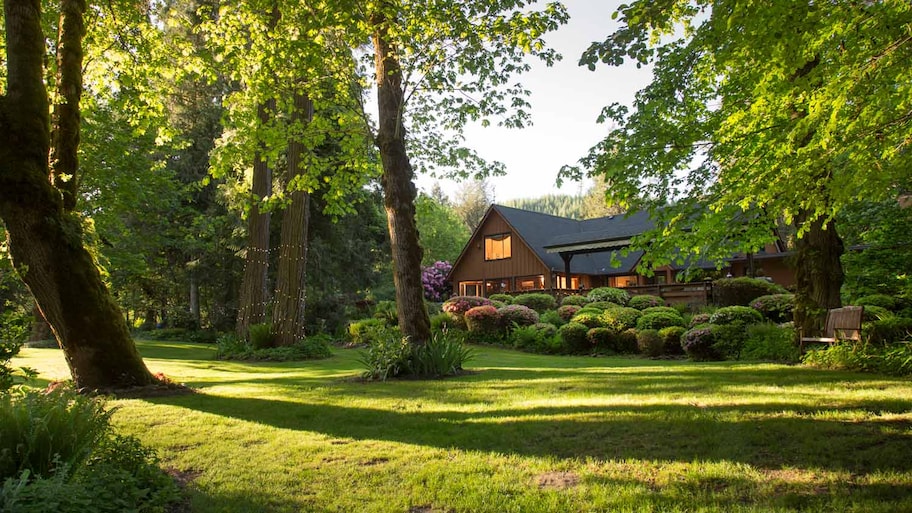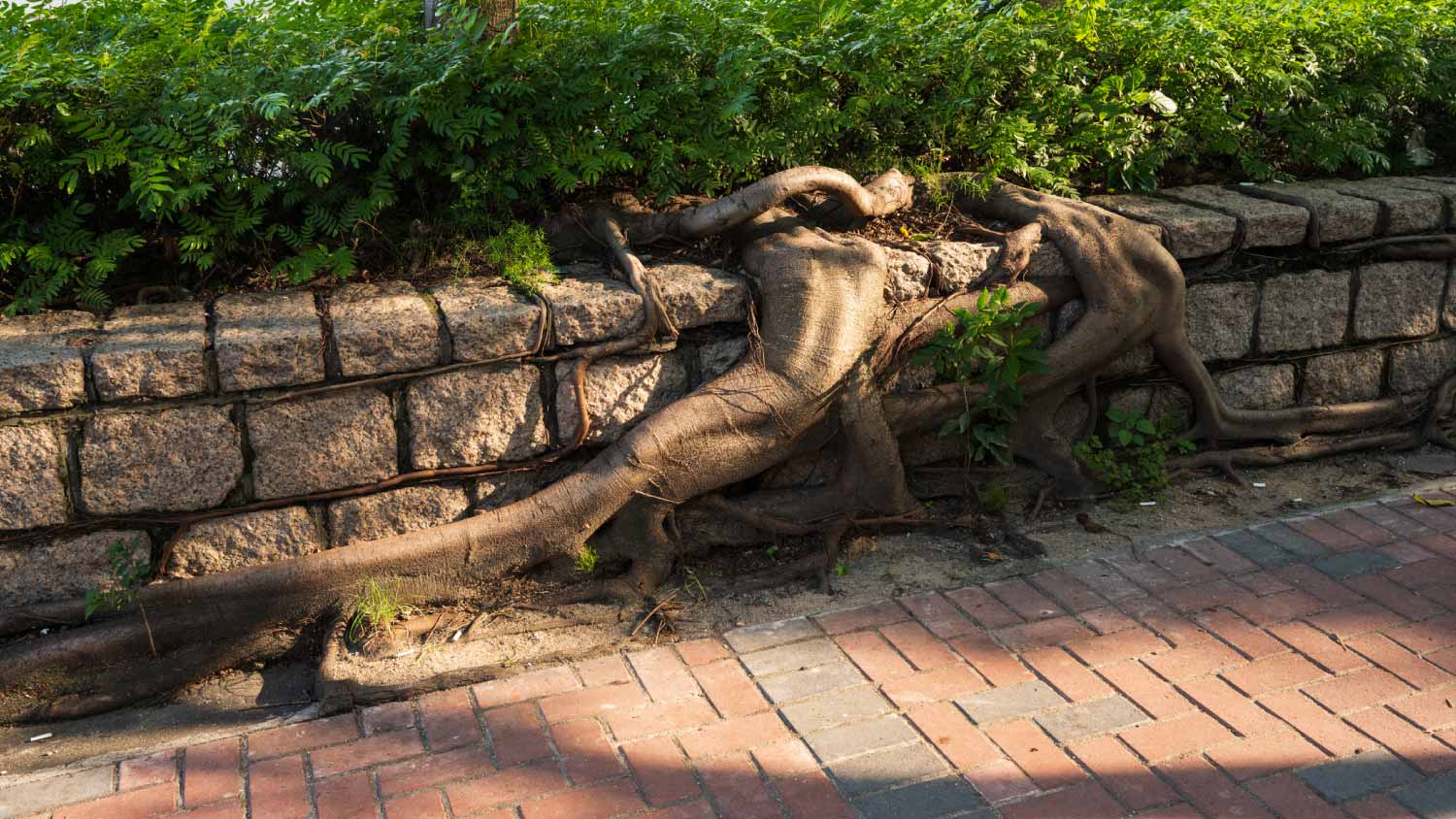What Is Stump Grinding? Here’s Everything You Need to Know
You can get right to the root of your problem with this time-tested tactic


A stump grinder is a tool that allows you to eliminate a visible stump in your yard, but leave behind its root system.
Stump grinding costs about $320.
You can build over a fully removed stump; but not over a ground stump.
In most cases, it’s best to call a professional tree stump removal expert to do the job.
Whether it’s for aesthetic reasons, safety, or the need to clear land in order to plant or build something new, removing tree stumps can be a worthwhile investment. Once you’ve decided you want to eliminate a tree stump on your property, you’ll need to choose between stump removal and stump grinding.
Learning what stump grinding is, and how it differs from total removal, can help you make a well-informed decision that best fits your needs.
What Is Stump Grinding, and How Is It Used?
Stump grinding is the process of removing the stump of a tree while leaving its roots intact underground. Using a stump grinder, a pro can grind down the stump to your desired level, whether you’d prefer it to be even with the ground or several inches deep. The ground-up stump materials are used as filler so your yard is not left with unsightly dips or holes. Remember always to wear protective gear, like safety goggles, gloves, and earplugs, when operating loud, heavy machinery.
You’ll want to use a chainsaw to get the stump as low to the ground as possible. Then, position the stump grinder a few inches above the stump, engage the controls, and push it down on the stump and then side to side, removing a few inches at a time. You can level the stump to the ground, or even choose to grind it a few inches underground.
While the above is a quick lesson in the basics of stump grinding, be sure to do your research to learn more about how to use a stump grinder, and follow any manufacturer’s instructions before taking on the project.
What Is a Stump Grinder?
Stump grinders are machines that—as their name suggests—grind away at the stump of a tree after you’ve cut it down. These machines use a rotating blade that rips the stump into pieces as it spins.
Stump grinders come in many different shapes and sizes, but almost all options feature the same three elements: an engine, a cutting wheel drive belt, and a vertically positioned, rotating blade for gradually removing wood from the stump.
Types of Stump Grinders
While all stump grinders have the same goal, they come in a few different types that operate slightly differently.
Hand-guided grinders are small and lightweight. As such, they’re portable, so they’ll be easy to transport. Also known as handlebar or walk-behind grinders, these stump grinders are considered easy to handle and use.
Rear-hitch grinders are also known as wheeled stump grinders. These are great options if you need something larger that travels well, as they attach to trucks and trailers.
Riding stump grinders are similar to small tractors, with the driver operating from a seat.
Skid grinders are similar to riding grinders. Drivers operate skid grinders from a seat behind or atop the machine. These grinders have track treads, which means that the machine provides good traction and won't churn up soil and leave a major mess.
Stump grinder attachments are an excellent option if you already have a heavy machine like a tractor or chainsaw and would like to add an attachment to ensure it can grind stumps effectively.
Stump grinders are high-risk tools that can accidentally propel objects and debris. When using a stump grinder, equip yourself with protective gear and thoroughly clear the area. Alternatively, hire a professional stump grinder to ensure your personal safety and professional-level results.
Does Stump Grinding Remove Roots?
Over time, the tree roots that are left behind after stump grinding will decay, and the soil will decompose. If the tree roots are invasive and have caused damage to a pathway, foundation, or lawn, stump grinding won’t fix the issue.
Is Stump Grinding the Same as Stump Removal?
Although stump grinding will eventually remove a stump completely, it’s not technically the same as stump removal. While the former allows the tree roots to naturally decompose over time, the latter relies on heavy-duty removal tools (like an excavator) and sometimes chemicals to remove the roots right away.
Total stump or bush stump removal is both more expensive and time-consuming, but may be necessary if the stump or roots are large, invasive, and pose safety risks, like causing damage to the structural integrity of your home.

When to Stump Grind
Stump grinding is a good option for most stump projects. If you need to do the project relatively quickly and don’t need to remove the roots of the tree as well, stump grinding may be the best route to go.
Ultimately, speaking with a pro about your stump project will help you decide which method is best for you, as there are a few instances where stump grinding may not necessarily be the best choice.
When Not to Stump Grind
While most trees that you remove are also good candidates for stump grinding, there are some situations in which a stump cannot or should not be ground. Stump grinding is very difficult or impossible when:
The stump is in a hard-to-reach place where equipment cannot get near it.
The stump is surrounded by hardscaping that will be damaged by grinding or removal.
The stump is located very close to a building or foundation that may be damaged in the process.
The stump is located very close to other trees or plants that will be harmed.
In most cases, however, stump grinding is a convenient, quick, relatively DIY-friendly way to make your stumps go away.
Can You Rent Stump Grinders?
Renting a stump grinder is a good option if you have the skills and knowledge about how to complete the job safely. Reach out to your local hardware store to learn more about their pricing and rental options.
Rental Considerations
Be sure to assess your situation before renting a stump grinder so that you have the right equipment and all the necessary accessories to complete the job. Make a note of the diameter of the trunk as well as what’s in the surrounding area to take with you to the hardware store. There, workers will be able to help you consider all these factors and guide you to the best choice.
DIY Tips
Stump removal does bring some safety risks that make it a bit of a tricky DIY. That being said, there are a handful of things you can do to achieve the best results when stump grinding yourself. Below are the steps you can take to ensure success and a safer DIY process.
Get Your Workspace Ready
Remove any obstructions like outdoor furniture, plants that could get damaged during the grinding process, and any stones or debris that could damage the machine or pose safety risks.
Find the Right Tool
When picking a stump grinder, consider the stump's age, size, depth, and condition, as well as what’s in the surrounding area. Rear-hitch or riding stump grinders are better for very large trunks because they have more horsepower, whereas a hand-guided stump grinder will be perfectly suitable for a small-to-midsize trunk in your front yard.
Take Your Time
Stump grinding is already much faster than other forms of stump removal, and moving too quickly through the process is more likely to create safety hazards and potentially damage the machine. In general, expect the process to take anywhere from 15 minutes to two hours (and sometimes longer, depending on the size of the trunk).
DIY vs. Hiring a Pro
Although stump grinding is a totally doable project for the typical homeowner, it may not be worth the trouble since it costs about the same to hire a pro as it does to do it yourself. Renting a stump grinder costs from $190 to $270 for one day, and local stump removal pros charge between around $170 and $500 for a full service.
Not to mention, stump grinding does involve working with heavy equipment, and there are safety risks involved in any major landscaping project like this one. You can do this task on your own if you want, or you can save your energy for other DIY projects and hire a stump grinding company to take it off your plate.
What To Do After Stump Removal
Your options for landscaping after stump grinding include seeding for new grass, decorating with a water feature, and adding a container garden. If you want to plant a new tree, you’ll have the most success if you wait at least a few months—that way, any of the old tree’s roots that may still be intact further underground will have time to decompose. It’s also a good idea to plant the new tree at least six feet from where the old tree stood, if possible.
Stump Grinding Alternatives
If you’re looking for a way to get rid of your stump as soon as possible, consider these options instead of stump grinding.
Chainsaw Removal
If you really want to DIY but don’t have access to the right equipment, you’ll find that you can remove some small stumps without grinding them or having them removed professionally. Very small stumps can be removed with a chainsaw, though you won’t be able to trim it truly flush with the ground or address any of the roots using this method.
Shovel Root Removal
If you’d like to try to pull out the roots, you’ll need to use a shovel to loosen the dirt around your stump and use a pulley or your body weight to try to rock the stump and roots free from the ground. Though this is very hard work, and likely only to be successful with a very small tree, it is possible.
Chemical Stump Removal
Another option you can try is chemical stump removal. Chemical stump removers work by speeding up wood decay. Though each product varies slightly in how you use it, you usually drill holes in your stump, apply the chemical remove to the holes, and wait until the wood has decayed.
Create a level playing field—literally—using one of these simple methods.
Frequently Asked Questions
Leaving stumps in place comes with a lot of drawbacks. Along with being unsightly, tree stumps left in the ground can attract pests, rot away in your yard, encourage weed growth, and harm other plants and trees sharing your lawn. In extreme cases, tree stumps and their roots can damage the structure of your home or reduce your property value.
While it’s tempting to just leave them be, the longer you wait, the more you might regret it.
Yes, you can build over a stump if the roots are no longer alive. Living roots will continue to grow and may damage your new construction over time. Similarly, you should also remove rotting stumps because they may continue to attract pests and even cause new structures (especially those made from wood) to decompose as well.
Although it’s possible, heavy machinery like a crane is necessary for removing an entire tree stump and all. This procedure is extremely costly, time-consuming, and usually unnecessary, as there are plenty of convenient and affordable stump removal options.
Your best bet, if you want to be sure to remove a tree and its stump efficiently, is to speak with a professional. They’ll be able to walk you through the entire process.





- Stump Grinding vs. Removal: Which Is Better?
- Is Stump Grinding Necessary? Pros and Cons of Stump Grinding
- 7 Ways to Remove a Tree Stump
- How to Use a Stump Grinder
- How to Burn a Stump: 8 Steps for DIY Stump Removal
- How to Kill a Tree Stump: 7 Effective Methods to Try
- How to Rot a Tree Stump Fast
- 17 Creative Ideas for Tree Stumps Stuck in Your Yard
- How to Hollow Out a Tree Stump
- How to Remove a Palm Tree Stump: A DIY Guide











